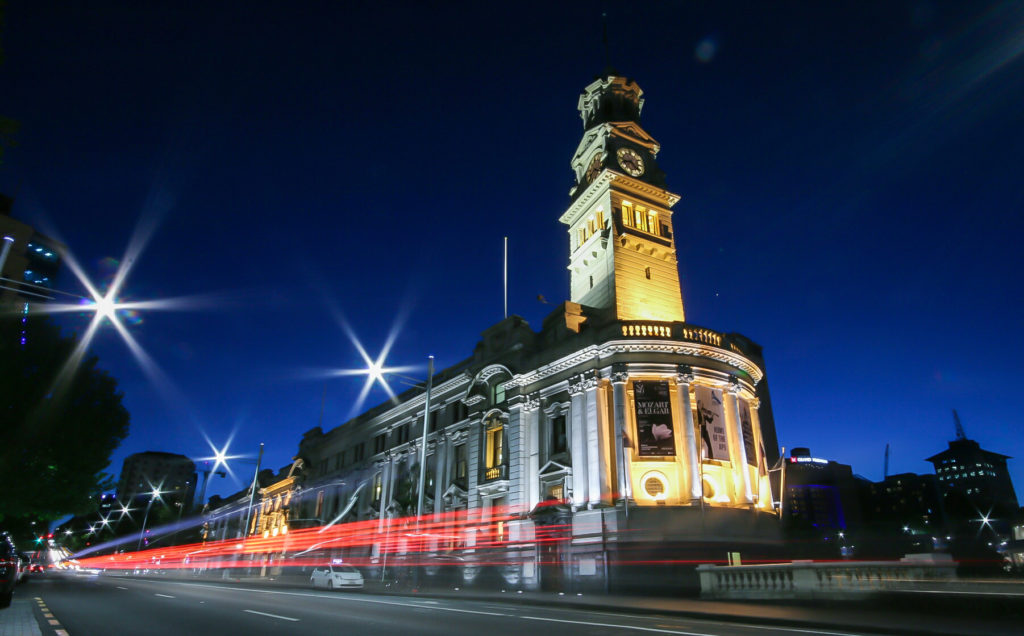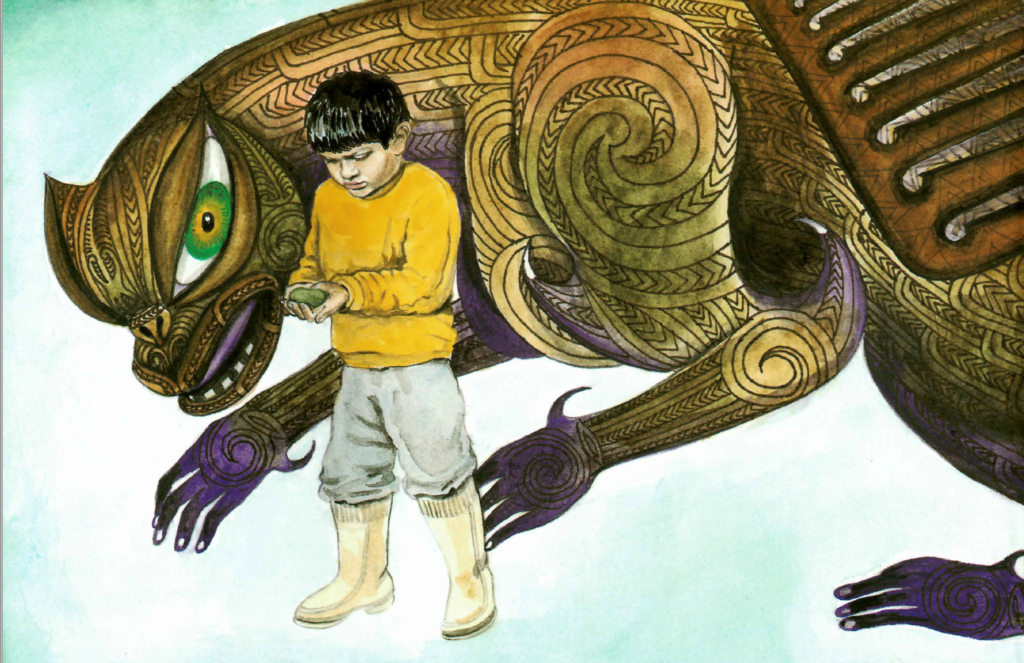
Since the start of the colonization of New Zealand by the British, the idea of representation has been part of many societal conflicts. Throughout much of the Invisible Auckland project, the lack of Māori representation in government structures and architectural projects has been the central focus. This kind of conflict of representation follows the standard political structure of a representative democracy, which is characterized by its focus on majoritarianism and liberalism (Hinchliffe, Kearnes, Degen, & Whatmore 2003: 650). In other words, when identifying a representative democracy, there are two main assumptions that must be fulfilled: that one living human can represent a majority populous and that individuals will act in a responsible way that promotes a harmonious society (Ibid). However, this is a concerning form of representation for various reasons. At the heart of the problem with a representative democracy is that it ignores the influence that nonhuman and nonliving things have on the politics of a certain governed area (Hinchliffe et al 2003: 650-651). It acts as if nonhuman and nonliving entities have no influence over humans and puts human society and nature in two completely separate categories. In this way, it fails to address how nonhuman actors are a central part of the political environment of any given place (Hinchliffe et al 2003: 645). This is where the significance of Glen Wilcox’s introduction of Horotiu the taniwha into the discussion about Auckland’s City Rail Link (CRL) construction becomes apparent.
During a June 7th, 2011 meeting of the Auckland City Council, Glen Wilcox, a member of the Independent Māori Statutory Board, disrupted this imaginary dichotomy between humans and nature. At this council meeting the City Rail Link (CRL) transportation project was a prominent topic of discussion. More specifically, its route, which would cut through the Central Business District of Auckland, connecting the preexisting train routes that run through its majority Māori and Pasifika southern suburbs to the downtown area, was the source of a serious problem (Culbertson: 4). While the CRL had the potential to make downtown Auckland more accessible, especially for marginalized communities in Auckland, like Māori and Pasifika people, its construction would disrupt the Waihorotiu stream, a part of the rohe (region) of Horotiu, a taniwha. In the Māori spiritual world, taniwha are guardians who watch over and protect their respective rohe, who are known to cause problems for various construction projects that have taken place within their rohe (Culbertson: 4-5). Glen Wilcox was very aware of this problem and promptly voiced his concerns by asking the council, “What’s being done about the taniwha Horotiu who lives just outside here, and that tunnel will be going right through his rohe.” By acknowledging this, Wilcox is asserting that the natural world that the taniwha exists in and the socially constructed world that the CRL is being built in exist in the same space. The dichotomy between them is imagined. However, there is more to Wilcox’s statements than just a destruction of this dichotomy.

When Wilcox talked about Horotiu, he did not ever say that he was acting as a representative of the creature. Rather, he was acting as a kaitiaki, or an entity imbued with the power and authority to voice the concerns of the Māori spiritual world (Culbertson). As a kaitiaki, it was not that he was speaking for Horotiu, rather Horotiu was speaking through him. And due to this ability to speak through Wilcox, Horotiu was forcing Auckland’s Council to address its presence and recognize that it was capable of expressing its own issues with the CRL construction (Hinchliffe et el 2003: 645, 647). In this way, Horotiu rejected the previous assumptions of a representative democracy: that it will be able to speak for the needs of all and that it is acting in a harmonious way. Actually, Horotiu in this case was promoting the need for a politics that recognizes how it would be specifically affected by the construction of the CRL (Hinchliffe et al 2003: 654). This kind of political practice can be found in the construction of a cosmopolitics.
Cosmopolitics is characterized by, “allow[ing] others, of all shapes, sizes, and trajectories, to object to the stories we tell about them, to intervene in our processes as much as we intervene in theirs,” (Hinchliffe et al 203: 655-656). The “we” used in this definition refers to living, human actors, suggesting that instead of employing a politics focused on speaking for others, societies should allow others of all forms to speak for themselves. In this case, Auckland’s Council should have recognized that Horotiu was an entity that was demanding that its existence be considered during city projects, like the CRL, which would affect it. While this was not fully achieved in 2011, it is clear that Horotiu stirred up controversy and actively generated conversations about the construction of the CRL. For example, the Auckland Council Transport Committee chairperson, Mike Lee, referred to the Transport Minister, Steven Joyce, as a “taniwha that’s blocking the central City Rail Link” after Joyce voiced his criticisms of the CRL project. It’s important to recognize that Lee’s comment were racist and belittling towards Māori people and their beliefs while at the same time, it demonstrated how Horotiu influenced conversations where taniwha had previously not been mentioned. And even though this public influence that Horotiu had over the CRL only lasted for a week, Horotiu clearly made its mark and challenged the conception that it needed a human representative to do all the talking for it. There is however, another entity that could also benefit from this cosmopolitics, which has become lost among Horotiu’s participation.
Cosmopolitics is characterized by, “allow[ing] others, of all shapes, sizes, and trajectories, to object to the stories we tell about them, to intervene in our processes as much as we intervene in theirs,” (Hinchliffe et al 203: 655-656). The “we” used in this definition refers to living, human actors, suggesting that instead of employing a politics focused on speaking for others, societies should allow others of all forms to speak for themselves. In this case, Auckland’s Council should recognize that Horotiu is an entity that is demanding that its existence be considered during city projects, like the CRL, that would affect it. While this was not fully achieved in 2011, it is clear that Horotiu stirred up controversy and actively generated conversations about the construction of the CRL. Even though this only lasted for a week, Horotiu clearly made its mark and challenged the conception that it would need a human representative to do all the talking for it. There is however, another entity that could also benefit from this cosmopolitics, which has become lost among Horotiu’s participation.
The Waihorotiu stream, where Horotiu lives, was the entity that was at the heart of the CRL construction controversy, because the construction would have intersected its path underneath the city. However, all the discussions of Horotiu’s influence over the project overshadowed the influence that Waihorotiu has itself. After all, without the Waihorotiu stream, Horotiu would not have a place to live in and protect and therefore would theoretically not have had a reason to affect this specific aspect of the CRL project. This stream has just as much a presence in the city as Horotiu does and should be recognized under the cosmopolitical frame as an entity that is affecting decisions that affect the physical landscape and infrastructure of the city.
In this video, the Waihorotiu stream underneath Auckland is explored among the urban environment.
(Source:
“Waihoritiu”. Directed by Frances Haszard and Louis Olsen, Produced by Scott Elder)
By focusing on Horotiu and Waihorotiu as political actors within the frame of cosmopolitics, our hope is that you can see how these nonhuman and nonliving entities have a direct impact on the world that they exist in. They do not just passively exist in the presence of the human-centric political world, nor are they passively represented by human actors. The impact of their presence should not be the arguments about the validity of the effects of the CRL on these entities. Instead the impact should be a reconsidering of what politics are useful to employ in discussions around urban planning projects in Auckland. It should also be noted that representation itself is not what is being criticized here – it’s the limited scope of representation that is important.
By Lina Klose